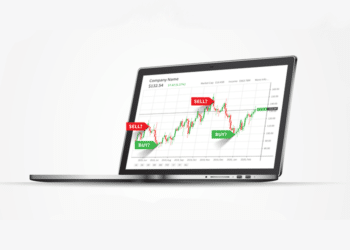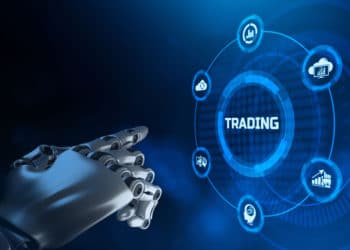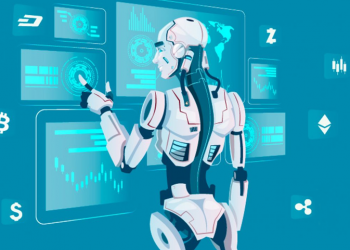There has been a long history of manual trading, but it wasn’t until the rise of technology that automated trading came into play. These two approaches are fundamentally different in that they demand different levels of human intervention in order to carry out an operation.
An algorithm will not be able to inspire trust if you are accustomed to placing trades and watching them unfold in front of you. Some traders are stuck in the belief that they must put in a full day’s effort in order to justify their profits. In this case, the use of semi-automated trading is beneficial. It could assist you in bridging the gap between automatic and manual alternatives.
Manual trading
Manual trading is when a trader decides when to purchase or sell an asset and then places the trade themselves, either through the market or pending orders, on their own. The manual trader may also examine different markets in order to identify potential opportunities before taking action. The trader does the bulk of the work. Thus the quality of their output is directly related to the quality of their input.
Emotions might play a role in forex trading decisions if you are trading manually. When a trading plan fails, it’s often because of the traders’ emotions, not because of the strategy. It is common for traders to start or leave trades prematurely or take positions; they shouldn’t do that because of their feelings. The emotions of greed, rage, and fear are common in trading. They may even try to make up for their losses by breaking money management rules and racking up more losses in the process.
Pros and cons of manual trading
Pros
- Manual trading is by far the best approach to gain experience and understand the market. It enables you to become familiar with and adept at a variety of tools, methods, and most crucially, the ability to make critical judgments based on market fundamentals and technical analysis as an investor.
- A trader who uses this type of trading approach is more likely to have greater control over the execution of a trade. Another benefit is that it helps to identify faults that could lead to future losses.
Cons
- This traditional approach to trading can be labor-intensive because it requires the trader to do extensive research, goes through previous trades, and pick the best moment to place a trade.
- In addition, dealing with the emotional component, which frequently influences trading decisions and diverts attention away from specific trading indications, is a significant drawback of this strategy.
Automated trading
By using an algorithm that has already been pre-programmed, traders can have their trading decisions made on their behalf. The
re are many ways to construct an algorithm to automatically execute trades based on rules or events set by a trader or programmer.
Using an automated forex trading system is a tedious process that adheres to rigid rules. This technique helps traders avoid emotional snags, but it also introduces new causes of worry. Some traders may not be comfortable with the idea of having trading robots decide when to enter and exit markets without the traders’ input.
Pros and cons of automated trading
Pros
- It eliminates all emotions from the decision-making process. When you use an automated trading system, you don’t have to worry about your feelings influencing your decision-making.
- There are free demo accounts for newbies to try out various trading techniques, or they can purchase one. For those who are unsure if auto trading suits them, this is a good place to start.
- When trading in this manner, the trader has the option of building a diverse portfolio of trading systems to cover various market scenarios. Traders can rapidly determine if a strategy has worked in the past and gather statistics on when it will cease functioning in the future, thanks to the algorithm’s ability to display all previous historical trades.
Cons
- Automatic traders have a tendency to over-optimize their systems and tweak parameters in order to make their historical performance appear spectacular. It is referred to as “curve fitting,” and it is a very widespread condition. It doesn’t matter how well traders do on historical data if they can’t predict future price movements.
- There is no guarantee that what happened in the past will happen again. Historically successful systems don’t guarantee future success, and the same is true for any given policy or procedure. Changing market conditions result in fluctuating volatility and shifting patterns.
- It’s not cheap to hire a coder to assist with the development of a trading strategy. Costs may also arise as a result of new optimizations or adjustments. It would be a huge disadvantage for most traders if they had to learn to code themselves.
Semi-automated trading
Semi-automatic trading is a middle ground between fully automated and manual trading. It is possible to trade in a semi-automated fashion by letting a computer program handle all the calculations, identify the ideal market conditions, and hunt for opportunities that fit your trading style before handing over control at the pivotal point.
This approach combines the knowledge and expertise of the trader with the analytical speed and speedy decision-making of automated systems.
Because the trader controls the final phase of the decision-making process, he has the ability to analyze the market utilizing semi-automated tools. If the trader agrees with the system’s recommendation, the order is sent. The semi-automated system will make any necessary adjustments to the stop price based on the trader’s instructions and criteria to close the position.
Pros and cons of semi-automated trading
Pros
- Semi-automated bots allow the trader to decide whether or not to trade.
- It is a mechanism through which automated trading systems and human traders can work together to produce better outcomes for traders.
- The technology ensures that traders have complete control over their trading accounts.
Cons
- Unlike automatic trading, a trader can miss out on trading opportunities if they delay acting on the entry price, stop loss and take profit signals that they get.
- It necessitates some familiarity with the world of trading and the usage of trading software. They may be unhelpful to complete newbies.
In summary
For some traders, entrusting their account management to a computer program may be too much. Every trader faces the constant threat of a bug in the robot or the trading platform, which could result in massive financial losses. Trading is all about making regular profits, so whether you use an automated or manual strategy, just go for what suits you. Semi-automated is an option if you want the best of both worlds.







